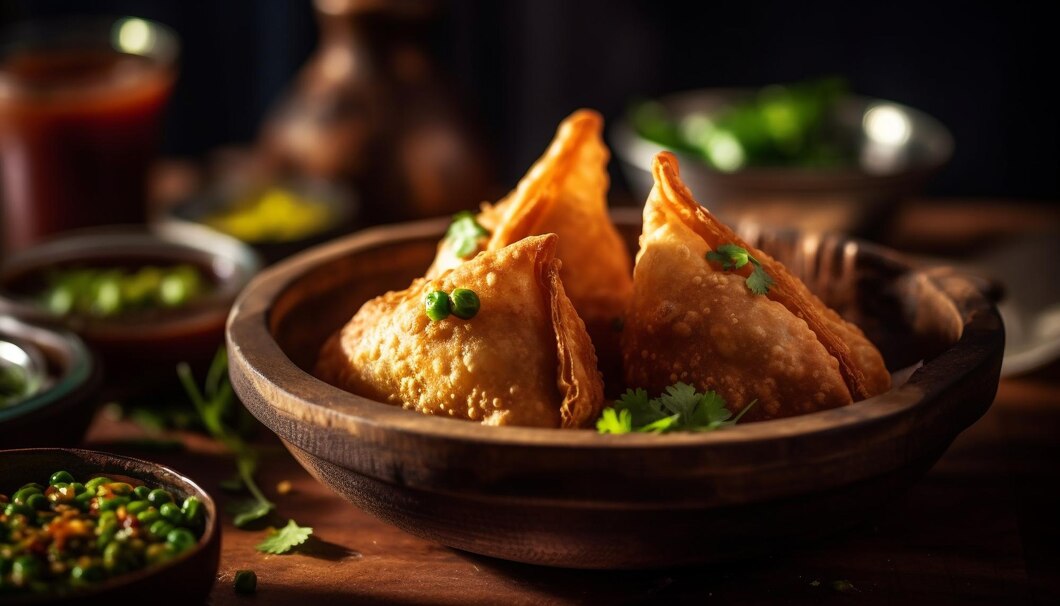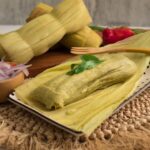Samosas are a beloved snack in many cultures, especially in South Asia and the Middle East. These crispy, golden triangles filled with savory fillings—typically spiced potatoes, peas, or meat—are perfect for parties, appetizers, or an afternoon snack. While you can find samosas at many stores or restaurants, making them at home allows you to customize the filling and enjoy them fresh out of the fryer. Here’s how to make samosas from scratch.
Ingredients:
For the Samosa Filling:
- 3 medium potatoes, peeled and cubed
- 1/2 cup frozen peas (or fresh peas)
- 1 tablespoon vegetable oil
- 1 medium onion, finely chopped
- 2 cloves garlic, minced
- 1 teaspoon grated ginger
- 1-2 green chilies, chopped (optional)
- 1 teaspoon cumin seeds
- 1 teaspoon ground coriander
- 1/2 teaspoon turmeric powder
- 1 teaspoon garam masala
- 1/2 teaspoon chili powder (optional for heat)
- Salt to taste
- 1/4 cup chopped cilantro (fresh coriander)
- 1 tablespoon lemon juice
- 1 tablespoon water (if needed)
For the Samosa Dough:
- 2 cups all-purpose flour
- 1/4 cup vegetable oil or ghee
- 1/2 teaspoon salt
- 1/4 teaspoon carom seeds (ajwain), optional
- 1/2 cup water (more as needed)
For Frying:
- Vegetable oil, for deep frying
Instructions:
1. Prepare the Filling
Start by boiling the potatoes. Place the cubed potatoes in a pot of salted water and cook until tender, about 10-12 minutes. Drain the potatoes and mash them roughly, leaving some chunks for texture.
In a separate pan, heat the vegetable oil over medium heat. Add the cumin seeds and let them sizzle for a few seconds. Add the chopped onions and sauté until golden brown, about 5-7 minutes. Add the garlic, ginger, and green chilies (if using), and sauté for another 1-2 minutes until fragrant.
Add the turmeric powder, coriander, chili powder (if using), and garam masala to the onions and cook for a minute to release the spices’ flavors. Stir in the peas and cook for 2-3 minutes until heated through. Then, add the mashed potatoes and mix everything together. Season with salt, and stir in the chopped cilantro and lemon juice. Set the filling aside to cool.
2. Make the Dough
In a large mixing bowl, combine the flour, salt, and carom seeds (if using). Add the vegetable oil or ghee and rub it into the flour until it resembles coarse breadcrumbs. Gradually add water, a little at a time, and knead until you form a smooth and firm dough. The dough should not be too soft or sticky. Cover the dough with a damp cloth and let it rest for about 20-30 minutes.
3. Shape the Samosas
Once the dough has rested, divide it into small, equal-sized balls (about 8-10). Roll each ball into a smooth ball and then roll it out into a thin oval or circle about 6 inches in diameter.
Cut the circle in half to make two semi-circles. Form a cone shape by folding one semi-circle in half, sealing the edge with a little water to create a pocket. Fill the cone with about 2 tablespoons of the cooled filling, pressing it gently to make sure it’s packed well.
Pinch the top of the cone to seal it shut, then fold in the edges to form a triangular shape. Press the edges firmly to seal the samosa completely, ensuring there are no openings.
4. Fry the Samosas
Heat enough vegetable oil in a deep pan or fryer to submerge the samosas (about 3-4 inches of oil). Heat the oil over medium heat. To check if the oil is ready, drop a small piece of dough into the oil—if it sizzles and rises to the surface, the oil is hot enough.
Carefully slide the prepared samosas into the hot oil, making sure not to overcrowd the pan. Fry them in batches for 5-7 minutes, turning occasionally, until they are golden brown and crispy. Remove the samosas from the oil and place them on a paper towel to drain excess oil.
5. Serve and Enjoy
Serve the samosas hot with chutney (mint chutney or tamarind chutney), a yogurt dip, or even a simple squeeze of lemon for added flavor.
Tips for Perfect Samosas:
- Use Ghee for Extra Flavor: For a richer taste, replace vegetable oil with ghee in both the dough and filling.
- Make Ahead: You can make the filling and dough ahead of time. Just store them in the fridge for up to a day or freeze the samosas before frying for later use.
- Vegetarian or Meat Options: If you prefer meat samosas, substitute the potatoes and peas with ground lamb, beef, or chicken. Be sure to cook the meat thoroughly and season it with your favorite spices.
- Crispy Texture: The key to extra crispy samosas is to make sure the dough is firm, not soft. Don’t overwork the dough, and make sure the oil is hot enough for frying.
Making samosas at home is a rewarding experience that results in a delicious, crispy snack. Whether you’re making them for a party, a snack, or a fun cooking project, samosas are always a crowd-pleaser. With this recipe, you can enjoy the perfect homemade samosas, full of flavor and made with love.








